Vein Treatments
Vein treatment aims to improve the patient’s quality of life. CVI (chronic venous insufficiency) presents with a wide spectrum of severity and symptoms.
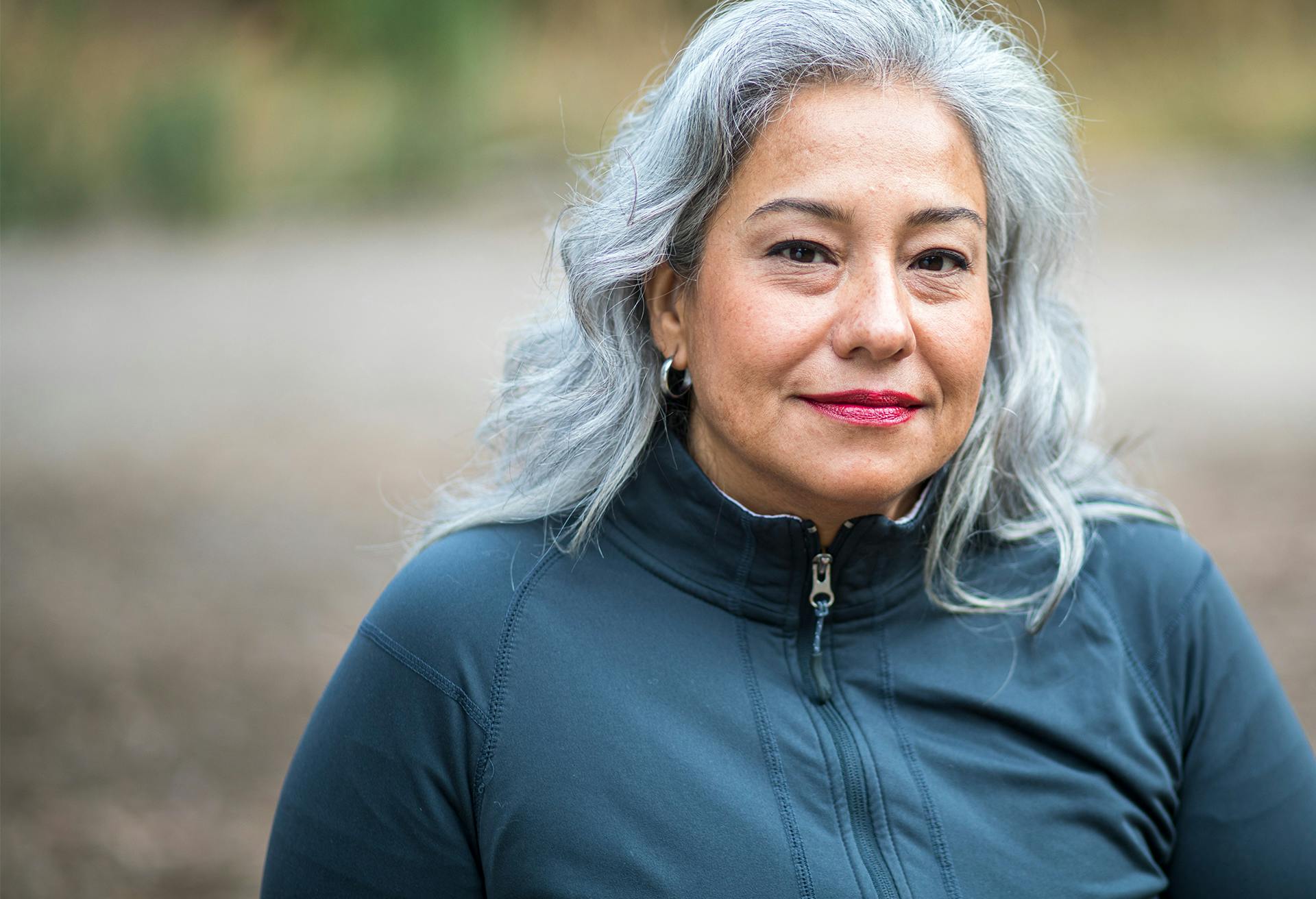


Whether the patient’s desire is to cosmetically improve the appearance of their leg(s) or to heal an advanced stasis ulcer, we’re here to help.
Non-surgical treatments
There are non-surgical treatment options for CVI. These include consistent compression stocking treatment, refraining from standing or sitting for long periods of time, and leg elevation. These methods tend to transiently improve symptoms, but typically do not treat the source of the disease. Surgical treatment involves re-routing venous blood return from the legs through healthy veins rather than incompetent veins.
Why choose Roller Weight Loss & Advanced Surgery?
Our surgeons at Roller Weight Loss & Advanced Surgery are widely recognized as being among the best in the region and leaders in the field of minimally invasive treatments for vein conditions, both functional and cosmetic. We perform a range of treatments for vein conditions and can meet with you to evaluate your condition and advise you of the best approach to bring you relief.
Treatments for chronic venous insufficiency (CVI)
The leg vein valves are the main problem. The veins serve as highways for blood return from the legs to the heart. This is aided by muscle contractions of the feet and the calves to push the blood upward. In order to provide continued upward flow, the leg veins are designed with one-way valves. When the valves of the large veins in the legs are leaking, other veins of the legs start to pool blood, which results in swelling, pain, and large bulging veins.
Radiofrequency ablation (RFA)
Radiofrequency ablation (RFA) is an office-based, minimally invasive procedure in which a diseased vein is accessed and treated using a small catheter. The procedure is sometimes called the ClosureFast™ procedure. Ultrasound is used throughout the procedure to ensure precision.
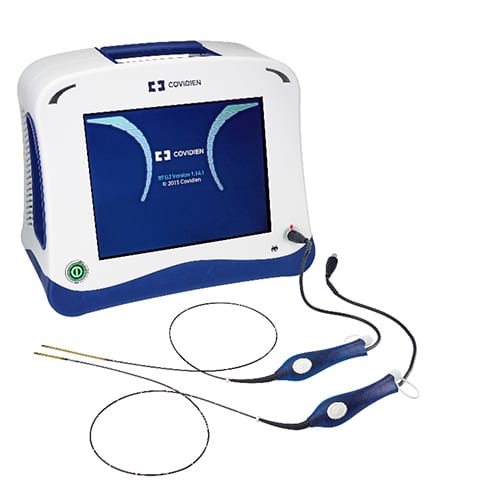
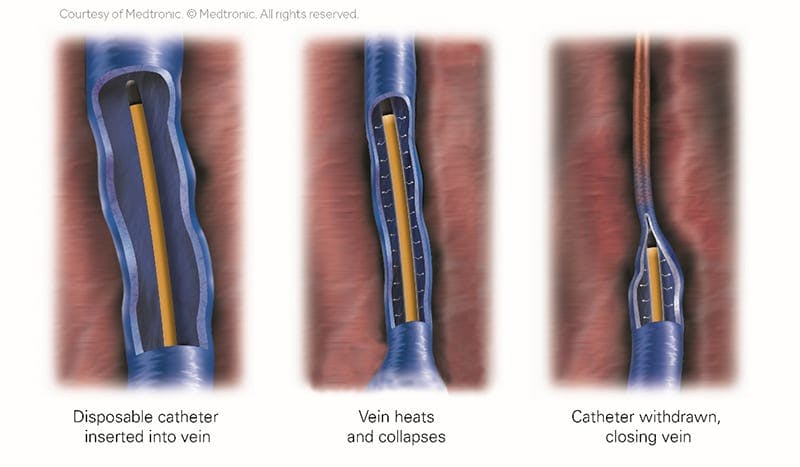
What to expect during your RFA procedure
The treatment will take about 45-60 minutes per session with one major vein treated per session. Once the leg is cleaned with a sterilizing solution, ultrasound is used to determine several landmarks along your leg and its veins. The entry site and the length of the vein are numbed using local anesthetic. A tiny incision is made and a catheter is inserted into the diseased vein. Heat is then delivered to close the target vein. As a result, the body will now re-route through healthy veins to deliver blood back towards the heart.
What to expect after your RFA procedure:
Your recovery time
Once the procedure is complete, we will place your leg in a compression stocking. Please plan on wearing the stocking for 48 hours. After this, we recommend that you wear it during the day forthe next five consecutive days. You will be scheduled for a follow-up ultrasound within one week.

Endovenous laser treatment (EVLT)
Endovenous laser treatment (EVLT) is another treatment option that is minimally invasive in which heat is delivered to collapse the diseased veins. Ultrasound is used throughout the procedure to ensure precision.
What to expect during your EVLT procedure?
The treatment will take about 45-60 minutes per session with one major vein treated per session. Once the leg is cleaned with a sterilizing solution, ultrasound is used to determine several landmarks along your leg and its veins. The entry site and the length of the vein are numbed using local anesthetic. A tiny incision is made and a catheter is inserted into the diseased vein. Heat is then delivered to close the target vein. As a result, the body will now re-route through healthy veins to deliver blood back towards the heart.
What to expect after yourEVLT procedure?
Once the procedure is complete, we will place your leg in a compression stocking. Please plan on wearing the stocking for 48 hours. After this, we recommend that you wear it during the day for the next five consecutive days. You will be scheduled for a follow-up ultrasound within one week.
VenaSeal
The VenaSeal™ procedure is the newest office-based, minimally invasive procedure in which a medical proprietary adhesive is used to close the diseased veins. It’s currently the only procedure that is performed without either tumescent anesthesia or heat, which minimizes the risks of heat-related nerve injuries. Ultrasound is used throughout the procedure to ensure precision.
What to expect during the VenaSeal procedure
We will start with a brief ultrasound of your leg. Then your leg will be cleaned with a sterile solution and a tiny amount of a numbing agent will be injected into your skin. A catheter is then placed into the diseased vein and advanced with ultrasound guidance. VenaSeal is then introduced through the catheter to treat the appropriate length of your vein. Once the catheter is removed, a bandage is placed on the puncture site.
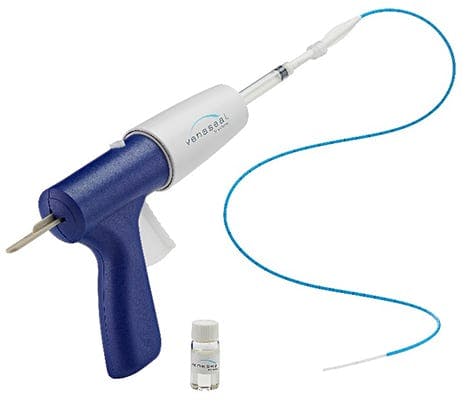
Your recovery:
What to expect after your VenaSeal procedure
Unlike most other vein treatment procedures, VenaSeal does not require wearing a compression stocking following the procedure. You can expect to resume most daily activities following the procedure.
Ambulatory microphlebectomy
Sometimes, even after other vein treatments, there are residual veins that may require surgical removal. Ambulatory microphlebectomy is an office-based procedure that involves the removal of such veins by tiny incisions. Tiny vein hooks are inserted to remove the diseased veins.
Start Living Your Best Life.
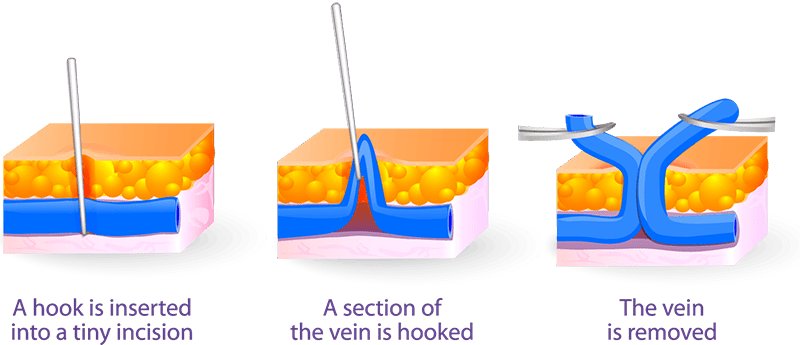
What to expect during your ambulatory microphlebectomy
First, we will mark your leg while you’re standing up, then you will be asked to lie down on the procedure table. After tiny injections of numbing medication, a series of 2-3 mm incisions are made and micro-hooks are used to retrieve and remove the diseased veins.
What to expect after yourambulatory microphlebectomy
A compression stocking will be placed on your leg after small bandages are placed on the microincisions. We ask that you wear the compression stocking for two weeks. Tylenol® or other over-the-counter analgesics will most often address some of the soreness you may experience after the procedure. We recommend that you refrain from strenuous exercise for the following two weeks.
Visual sclerotherapy
Visual sclerotherapy is a minimally invasive treatment modality in which visual superficial veins, spider veins, or even some of the larger surface varicose veins are treated with a medical sclerosant. Sclerosant is a medicine that will safely close these superficial veins.

What to expect during your
visual sclerotherapy procedure
The procedure will take approximately 30 minutes per session, with the number of sessions dependent on the extent of the disease. Lidocaine may be used to numb larger areas of treatment. Tiny needles are used to directly inject medicine into your superficial veins to close them. There may be mild discomfort, but expect no significant pain.
What to expect after your
Visual Sclerotherapy procedure
Upon completion, we recommend a compression stocking for at least the next week. Please plan on wearing the stocking at all times for the first 48 hours and then during the day for the next two weeks. We strongly recommend walking regularly following the procedure to prevent blood clots.
